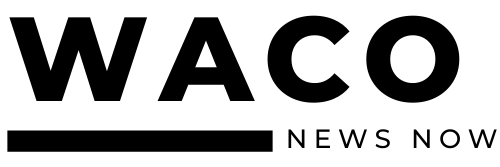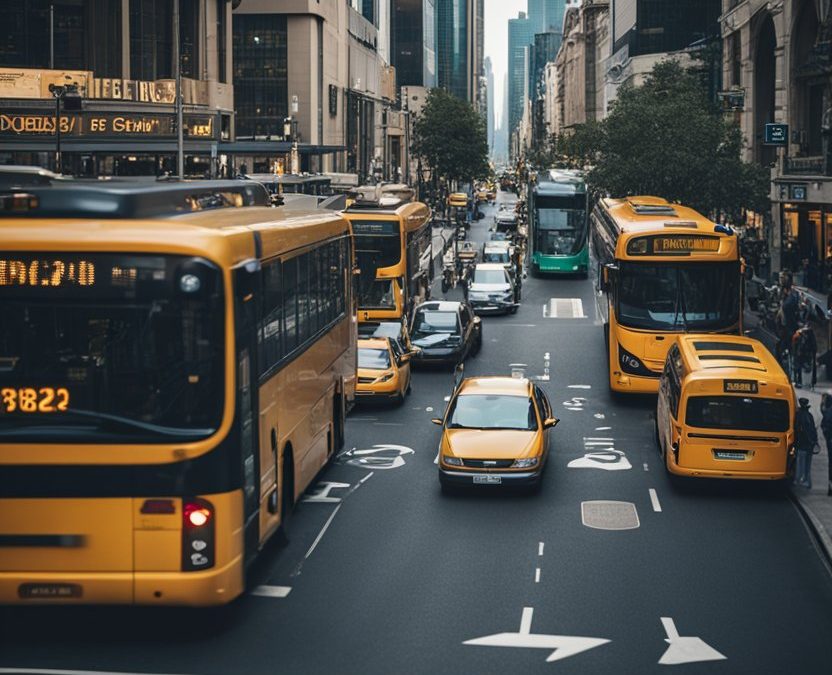Waco is a beautiful city located in the heart of Texas. It is home to many attractions such as the Cameron Park Zoo, the Dr. Pepper Museum, and the Texas Ranger Hall of Fame. With so many places to visit, getting around the city can be a challenge. That’s where Waco’s public transportation system comes in. As a local resident, I have used Waco Transit System (WTS) frequently and have found it to be an affordable and convenient way to get around the city. This guide to Waco public transportation will help you navigate the city with ease.
WTS operates several fixed-route bus services that cover most of the city. The buses run on weekdays and Saturdays, with limited service on Sundays and holidays. In addition to fixed-route services, WTS also offers a microtransit service called Micro Dash. Micro Dash is an on-demand service that operates within designated service areas. It’s ideal for those needing travel beyond fixed routes or seeking flexible schedules.
Buses: Guide to Waco Public Transportation
As the primary mode of public transportation in Waco, buses are an affordable and convenient way to get around the city. In this section, I will provide an overview of the Waco Transit System, discuss accessibility features for riders with disabilities, explain how to understand bus routes and schedules, and offer tips on how to use the bus system.
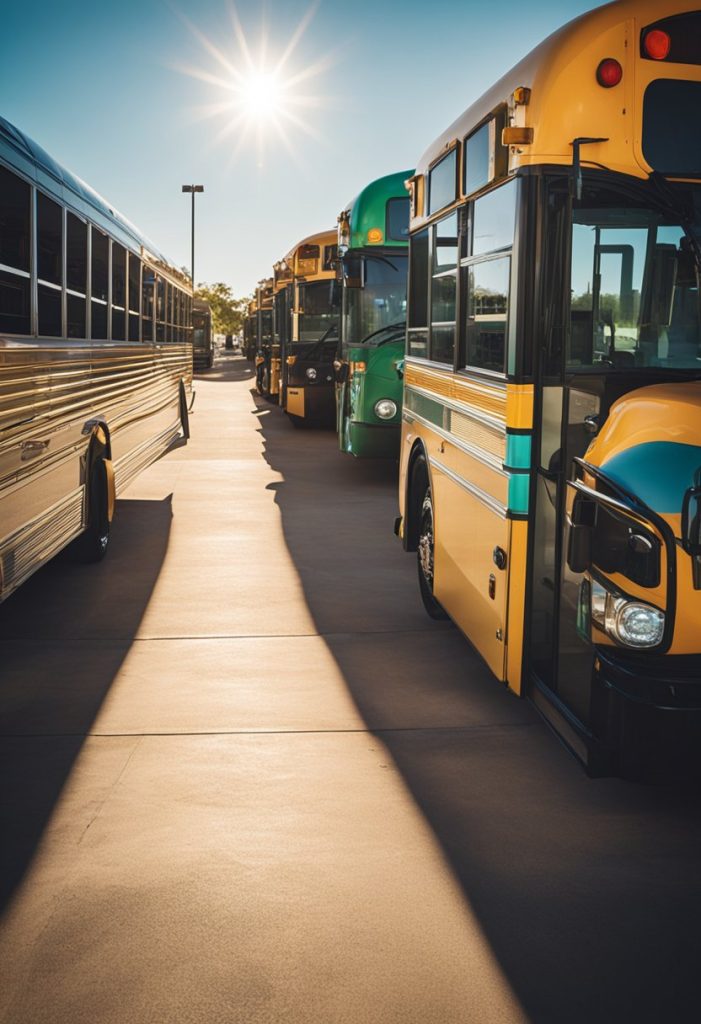
Overview of the Waco Transit System
The Waco Transit System provides safe and reliable public transportation to the citizens of Waco and the surrounding communities. Their services include a fixed route bus service within the City of Waco, the Baylor University Shuttle (BUS), and a Demand Response Van, for individuals with special transportation needs. Other special services include the Gold Rush Tailgate, Safe Ride Home on New Year’s Eve, and Charter.
Accessibility Features for Riders with Disabilities
The Waco Transit System is committed to providing accessible transportation for riders with disabilities. All buses are equipped with wheelchair lifts and securement systems, and operators are trained to assist riders with disabilities. Additionally, the Demand Response Van Service caters to individuals with disabilities unable to use fixed-route buses.
Understanding Bus Routes and Schedules
The Waco Transit System has several fixed bus routes that operate throughout the city. Each route has a designated number and color, and buses run on a regular schedule. Riders can use the Transit Maps to find the bus or use GPS Tracking to track the bus in real-time. The Transit Fares vary depending on the service, with discounts available for seniors, students, and persons with disabilities.
How to Use Bus System
To use the bus system, riders should arrive at the bus stop a few minutes before the scheduled arrival time. Riders should have exact change or a valid transit pass ready when boarding the bus. Once onboard, riders should take a seat and remain seated until their stop. To exit the bus, riders simply signal the operator by pulling the cord or pressing the stop button.
In conclusion, the Waco Transit System provides a reliable and affordable way to get around the city.
All riders, including those with disabilities, can utilize accessibility features and Transit Maps with GPS Tracking to simplify their travels, maximizing the bus system.
Fixed Route Bus Service: Guide to Waco Public Transportation
Living in Waco, I’ve found the fixed route bus service affordable and incredibly convenient for city travel. Here is a breakdown of what you can expect from the fixed route bus service within the City of Waco.
The fixed route bus service, managed by the Waco Transit System, follows a scheduled itinerary and timetable. Transitioning smoothly along designated routes, these buses cater to residents and visitors alike, ensuring safe and dependable transportation. Furthermore, equipped with wheelchair accessibility and bike racks, they accommodate diverse passenger needs efficiently.
Coverage of various routes
The fixed route bus service covers various routes within the City of Waco, including routes to Baylor University, downtown Waco, and other key locations. The routes are color-coded and each route has a unique number. The routes are designed to provide easy access to key locations in the city and to connect riders to other forms of transportation.
Key stops and schedules
The fixed route bus service includes key stops at major intersections, shopping centers, and other important locations along each route. The schedules for each route are available on the Waco Transit System website and at key locations throughout the city. The buses run from early morning until late at night, with service on weekends and holidays as well.
In summary, the fixed route bus service is a convenient and affordable way to get around the City of Waco. With various routes and reliable schedules, the service is ideal for residents and visitors.
Baylor University Shuttle (BUS): Guide to Waco Public Transportation
As a Baylor University student, I’ve found the Baylor University Shuttle (BUS) to be both convenient and free. Here, I’ll outline the shuttle service details, including key stops and schedules.
The BUS is a free shuttle service provided to all Baylor University students and scholars. The shuttle service operates on all class days from 7:25 AM to 5:25 PM. The shuttle service is available during the fall and spring semesters, but not during the summer semester.
The BUS has several routes that cover different parts of the campus. Routes include the East and West Campus, Bear Trail, Downtown Waco, and Baylor Research and Innovation Collaborative (BRIC). Each route has a different schedule, so be sure to check the schedule for the specific route you need.
Key stops and schedules
The BUS has several key stops that are commonly used by Baylor University students. The following are some of the key stops and their schedules:
| Stop Name | Schedule |
|---|---|
| Baylor Sciences Building (BSB) | Every 10 minutes |
| Baylor Student Union Building (SUB) | Every 5 minutes |
| Baylor Law School | Every 10 minutes |
| Baylor Research and Innovation Collaborative (BRIC) | Every 20 minutes |
It is important to note that the BUS schedule may change due to weather conditions, holidays, or other events. Therefore, it is always a good idea to check the schedule before you plan your trip.
In conclusion, the BUS is a convenient and free shuttle service for Baylor University students and scholars. With several routes and key stops, the BUS can take you to most places on the Baylor University campus.
Demand Response Van: Guide to Waco Public Transportation
For those with special transportation needs, the Demand Response Van service from Waco Transit System is an excellent option, providing door-to-door transportation within the coverage area for disabled customers.
Availability for individuals with special transportation needs
The Demand Response Van service is available to individuals who have a disability that prevents them from accessing the fixed route system. This service is available to all eligible individuals in the coverage area, which includes the City of Waco and the surrounding communities.
Eligibility Requirements
To be eligible for the Demand Response Van service, you must have a disability that prevents you from accessing the fixed route system. You will be required to provide documentation of your disability, such as a doctor’s note or a letter from a social worker. Once your eligibility has been verified, you will be able to use the service for all of your transportation needs.
Scheduling a Ride
To schedule a ride with the Demand Response Van service, you will need to call the Waco Transit System at (254) 750-TIPS (8477). You will need to provide your name, address, and the time and date that you would like to be picked up. The Waco Transit System recommends that you schedule your ride at least 24 hours in advance to ensure availability.
Overall, the Demand Response Van service provided by the Waco Transit System is an excellent option for individuals with special transportation needs. With its door-to-door service and eligibility requirements, it is a reliable and convenient way to get around the City of Waco and the surrounding communities.
Trolley System: Guide to Waco Public Transportation
Introduction to the Silo District Trolley
For a fun and convenient exploration of downtown Waco, try the Silo District Trolley. It’s free, running every 8-10 minutes from 9:00 a.m. to 6:30 p.m., Monday through Saturday. Perfect for reaching popular shops, restaurants, and art spots downtown.
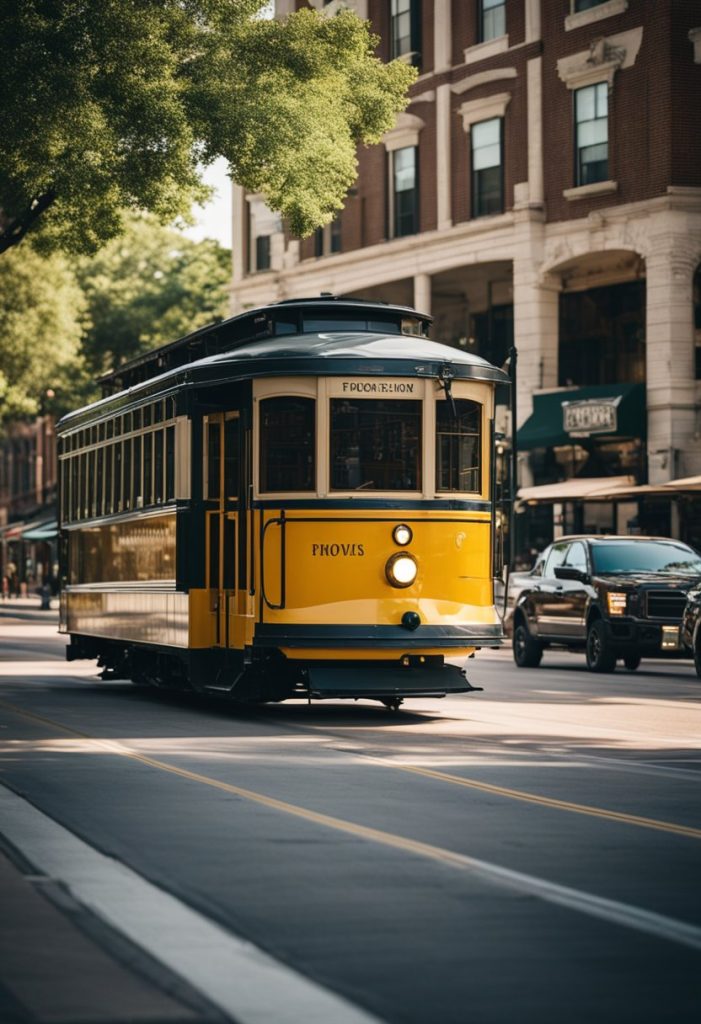
Key stops and route details
The Silo District Trolley has several key stops that you may want to consider when planning your trip. The trolley route includes stops at the Hippodrome & Shops, Magnolia Market at the Silos, and the Dr. Pepper Museum. You can find a map of the trolley route on the Greater Waco Chamber of Commerce website.
Tips for riding the trolley
If you’re planning on riding the Silo District Trolley, here are a few tips to keep in mind:
- The trolley is a popular service, so be prepared to wait in line during peak hours.
- The trolley is wheelchair accessible, so if you have mobility needs, don’t hesitate to use the service.
- If you’re traveling with a large group, consider splitting up into smaller groups to make it easier to board the trolley.
- The trolley is air-conditioned, so it’s a great way to stay cool during hot summer days.
Overall, the Silo District Trolley is a great way to explore downtown Waco. The trolley offers a convenient route, key stops, and a fun atmosphere, making it perfect for city exploration.
Paratransit Services: Guide to Waco Public Transportation
As part of the Waco Transit System, paratransit services are available for individuals with disabilities who are unable to use fixed-route public transportation independently. Here’s what you need to know about paratransit services in Waco:
Paratransit services in Waco are designed to provide transportation for individuals with disabilities who are unable to use fixed-route public transportation independently. These services are provided through the Waco Transit System and are available to individuals who meet the eligibility requirements.
Eligibility Requirements
To be eligible for paratransit services in Waco, individuals must have a disability or impairment that hinders their independent use of fixed-route public transportation. Disabilities encompass various conditions such as mobility impairments, visual impairments, cognitive impairments, and others.
To determine if you are eligible for paratransit services, you must fill out an application and submit it to the Waco Transit System. Once your application has been reviewed, you will be notified of your eligibility status.
Scheduling a Ride
To schedule a ride with the Waco Transit System’s paratransit services, you must call the reservation line at least 24 hours in advance of your desired travel time. You will need to provide your name, address, phone number, and the date and time of your desired trip.
When scheduling your ride, be sure to provide any special instructions or accommodations you may need, such as a wheelchair lift or assistance with boarding and disembarking the vehicle.
Overall, paratransit services in Waco are a valuable resource for individuals with disabilities who are unable to use fixed-route public transportation independently. If you believe you may be eligible for these services, be sure to fill out an application and submit it to the Waco Transit System.
Convey 2050 The Waco Metropolitan Transportation Plan: Guide to Waco Public Transportation
Overview of Convey 2050
Certainly! A reliable public transportation system is vital for Waco’s residents, which is why I’d like to highlight the Convey 2050 plan. This regional transportation blueprint addresses Waco’s future needs up to 2050, outlining priority projects to enhance efficiency and reliability.
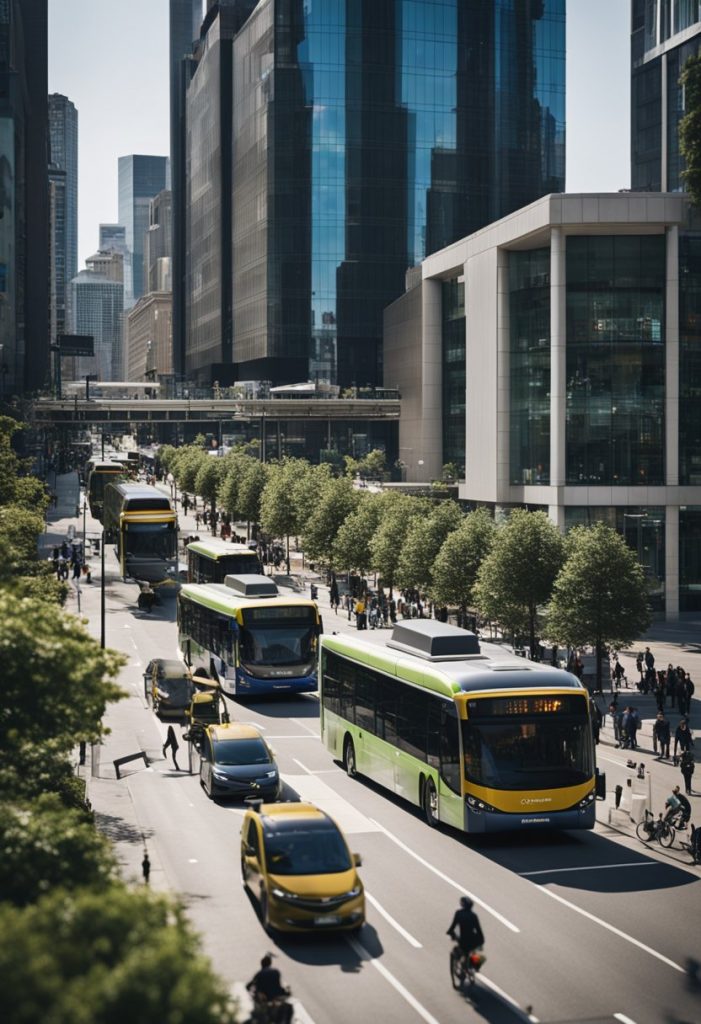
The Convey 2050 plan, devised by the Waco Metropolitan Planning Organization (MPO) in conjunction with various agencies, acts as a blueprint for transportation planning and investment decisions for the upcoming decades. Updated every five years, it stays pertinent and adaptable to community needs. This regular review process facilitates adjustments in alignment with evolving circumstances and emerging trends. Through its collaborative development, diverse perspectives are considered, thereby enhancing its overall effectiveness.
One of the key goals of the Convey 2050 plan is to improve mobility and accessibility for all residents of the Waco area. This includes improving public transportation options, such as buses and trains, as well as enhancing pedestrian and bicycle infrastructure. The plan also seeks to reduce congestion and improve air quality by promoting the use of alternative transportation modes, such as carpooling and telecommuting.
To achieve these goals, the Convey 2050 plan identifies several priority projects, including the expansion of the Waco Transit System, the development of a regional rail system, and the construction of new bike lanes and pedestrian walkways. The plan also includes strategies for funding these projects, such as seeking federal grants and partnering with private investors.
In summary, the Convey 2050: The Waco Metropolitan Transportation Plan is a comprehensive and forward-thinking plan that seeks to improve mobility, accessibility, and sustainability in the Waco area. As a resident, I am excited to see the positive changes that will result from the implementation of this plan.
Planning Your Journey: Guide to Waco Public TransportationPlanning Your Journey
Having experienced the Waco public transportation system firsthand, I understand the significance of planning your journey in advance. Here are some tips to help you get started:
How to Use the Waco Transit System
The Waco Transit System is a great option for getting around the city. You can pay for your ride with cash, a prepaid pass, or a mobile ticket. If you’re new to the system, you can ask the driver for help or check out the transit maps available online.
Real-Time Information and Trip Planning
To make your journey as smooth as possible, you can use real-time information and trip planning tools. The Waco Transit System offers a GPS tracking system that allows you to see where your bus is in real-time. You can also use transit apps like Ride Systems to plan your trip ahead of time.
Online Resources
The Waco Transit System website has a wealth of information to help you plan your journey. You can find information on bus routes, schedules, fares, and more. If you’re a student at Baylor University, McLennan Community College, or Texas State Technical College, you can take advantage of the Baylor University Shuttle and other transportation services offered by your school.
In summary, planning your journey on the Waco public transportation system is easy with the right tools and resources. Whether you’re going to work, school, or just exploring the city, the Waco Transit System has options to meet your needs.
Enhancing the Rider Experience: Guide to Waco Public Transportation
As a regular rider of the Waco Transit System, I can personally vouch for the numerous ways the service surpasses expectations, ensuring a safe and enjoyable experience for all passengers. Here are several key ways the transit system enhances the rider experience:
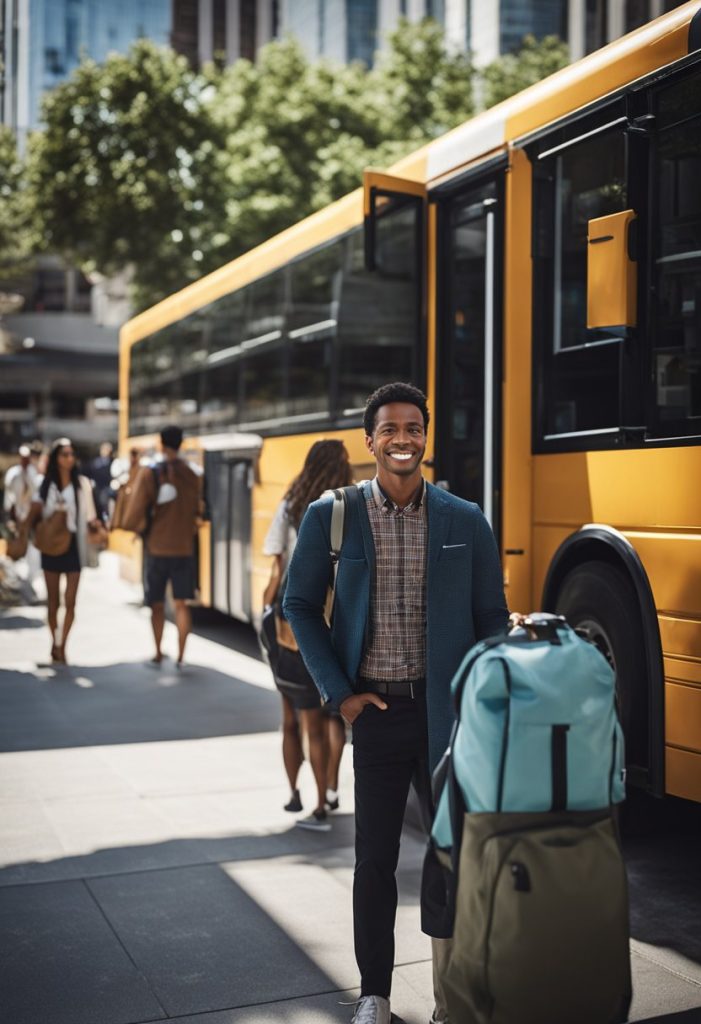
Safety Measures and Service Reliability
The Waco Transit System places a high priority on safety and service reliability. All buses are equipped with GPS tracking systems and cameras to ensure safe and efficient travel for all passengers. In addition, the transit system has implemented a number of safety measures, such as regular maintenance checks and driver training programs, to ensure that all buses are safe and reliable.
Fare Information and Payment Options
The Waco Transit System offers a variety of fare options to meet the needs of all riders. Moreover, fares are affordable and competitive with other public transportation systems in the area. In addition, payment options include cash, tokens, and passes, which can be purchased at several locations throughout the service area.
Special Services and Community Programs
The Waco Transit System offers a number of special services and community programs to enhance the rider experience. These include:
- Gold Rush Tailgate: A shuttle service that provides transportation to Baylor University football games.
- Safe Ride Home: A program that provides free rides to individuals who have been drinking and need a safe ride home.
- Charter Service: A service that provides transportation for groups and organizations.
- Travel Training: A program that provides free travel training to individuals with disabilities or other special needs.
- Special Assistance: A service that provides assistance to individuals with disabilities or other special needs.
Overall, the Waco Transit System is a safe, reliable, and inclusive public transportation system that provides continuous and comprehensive service to the Waco population.
Future of Public Transportation in Waco: Guide to Waco Public Transportation
As Waco continues to grow, so does the need for an efficient and sustainable transportation system. The Waco Transit System (WTS) currently provides public transportation services to the city, but there are plans to expand and improve the system in the near future.
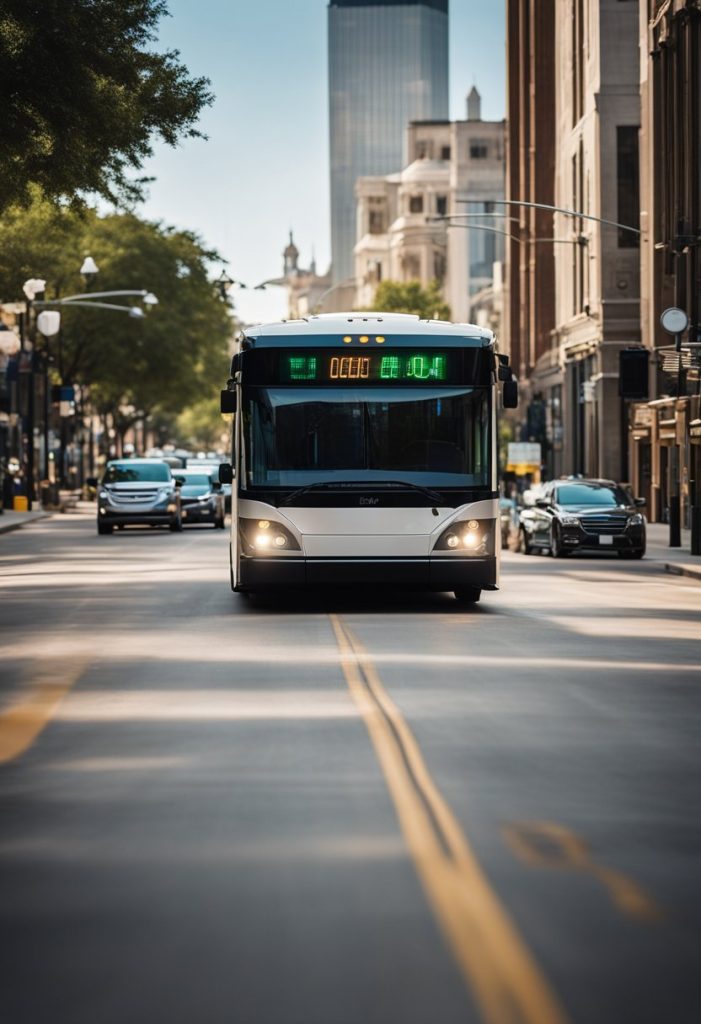
Current Projects and Future Plans: Guide to Waco Public Transportation
The Waco Metropolitan Planning Organization (MPO) is currently working on several projects to improve the public transportation system in Waco. One of the major projects, for instance, is the implementation of a new transit hub in downtown Waco. This hub will serve as a central location for all bus routes. Consequently, it will make it easier for residents to transfer between different routes and modes of transportation. Moreover, the new transit hub aims to enhance overall connectivity within the city. Furthermore, it is expected to reduce travel times and increase the efficiency of the public transportation network. Ultimately, these improvements will contribute to a more convenient and accessible transit system for all Waco residents.
Another project that is currently in the works is the expansion of the WTS service area to include surrounding cities such as Hewitt, Robinson, Bellmead, and Woodway. This expansion will provide residents of these areas with access to reliable and affordable public transportation services.
The MPO is also exploring the feasibility of implementing a light rail system in Waco. This system would provide a faster and more efficient mode of transportation for residents, while also helping to reduce traffic congestion and improve air quality.
Community Involvement and Feedback: Guide to Waco Public Transportation
The MPO is committed to ensuring that the public transportation system in Waco meets the needs of the community. To achieve this goal, the MPO regularly seeks feedback from residents through public meetings, surveys, and other forms of community engagement. Additionally, the MPO actively collaborates with local organizations to understand diverse perspectives. Furthermore, it continuously monitors transportation trends and innovations to implement best practices. Moreover, the MPO evaluates the effectiveness of existing services to identify areas for improvement. Ultimately, these efforts aim to create a more efficient, accessible, and user-friendly public transportation system for all residents.
In addition to seeking feedback, the MPO also works closely with local organizations and businesses to identify opportunities for collaboration and partnership. This collaboration helps to ensure that the public transportation system in Waco is sustainable, equitable, and meets the needs of all residents.
Overall, the future of public transportation in Waco looks bright. With the support of state funding, community involvement, and sustainable infrastructure, the city is well on its way to implementing a reliable and efficient public transportation system that meets the needs of all residents.
